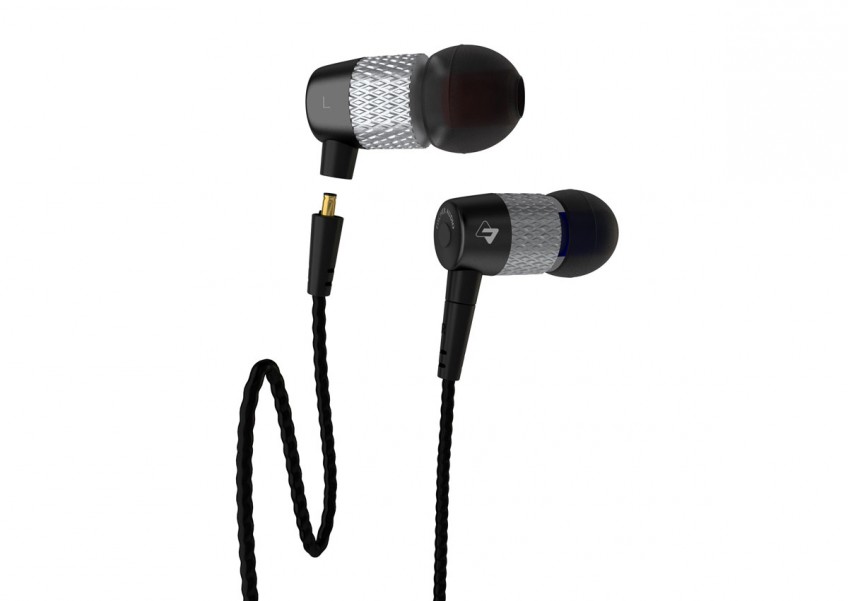High-quality, mid range earphones

Those looking for a pair of mid range earphones with a crisp and rich sound should consider Fischer Audio's Dubliz Enhanced.
It is the third product in the Dubliz series and was released earlier this week. The New Paper tried it out, and this is what we found:
DESIGN
The Dubliz Enhanced is made from aviation-grade aluminium, making it sturdy yet lightweight.
It comes with five pairs of eartips - three sizes of single flange, a medium-sized double flange, and a pair of premium foam tips that I used to try out the earphones.
I found the fit to be snug, meaning the earphones stayed comfortable during long periods of use while cancelling out most ambient noises.
The 1.2m-long cable - which is detachable from the earpiece, making the earphones easier to store - is braided with Kevlar, so you need not worry about tearing or breaking it.
At the same time, the material makes the cable stiff and causes vibration to travel all the way up to the earpiece.
SOUND
The Dubliz Enhanced is equipped with a dual-diaphragm transducer, which means it uses two membranes to produce sound.
The front membrane is responsible for the mid and high frequencies, while the rear membrane works on the low frequencies.
As a bass lover, I would have liked the bass to be punchier, but it was still enjoyable.
While the Dubliz Enhanced does not boom like my pro-bass JVC HAFX1X, it compensates with its well-layered bass and clear tones.
But the mid range (vocals) is where the Dubliz Enhanced really comes to life.
To test it out, I played Norwegian singer Radka Toneff's Lonely Woman and was blown away by how well the earphones captured her voice, the piano and the double bass.
They were combined into one smooth aural treat, and this should appeal to those who enjoy jazz and blues music.
ACCESSORIES
The Dubliz Enhanced comes with a second 1.2m-long cable, which is equipped with a microphone and all the necessary controls.
The box also includes an 8cm by 8cm hard pouch that can store the cables, spare eartips and earphones.
VERDICT
At $138, the Dubliz Enhanced can rival - or even beat - other earphones packed with more features.
So if you are looking for earphones that produce a smooth and crisp sound, the Dubliz Enhanced may very well be for you.
rloh@sph.com.sg
BOSE SOUNDSPORT $239

The Bose SoundSport is for those who enjoy listening to quality music while working out.
Its bass tones are emphasised with the mids and trebles coming through clearly and crisply.
The earbuds fit snugly with the help of fins, which keep them in place and make them difficult to dislodge except in the most vigorous of activities.
JABRA SPORT COACH SPECIAL EDITION $198

The Jabra Sport Coach is another option for fitness fanatics. It produces powerful sounds with a good clarity on the details.
The special edition of the earphones even allows for rep counting with an integrated motion sensor inside the earbuds that registers movements.
ONKYO E700M IN-EAR HEADPHONES $149

The Onkyo E700M in-ear headphones are well worth the price as the sound quality and construction are superb.
The audio produced is balanced with little artificial bass and highs, while the nuances come across very clearly.
Onkyo may be a manufacturer of high-end audio products targeted at the true audiophiles, but the E700M delivers excellent sound to the masses at a reasonable price.
FISCHER AUDIO TOTEM PACO FE-131 $38

The other model we are featuring from the Fischer Audio family is for users who want durable earphones that produce good sound without breaking the bank.
Targeted at users who listen to music on their smartphones, the Totem Paco FE-131 gives clean trebles and detailed mids, although the clarity suffers when it comes to heavier genres. - THE STRAITS TIMES

This article was first published on Dec 31, 2016.
Get The New Paper for more stories.